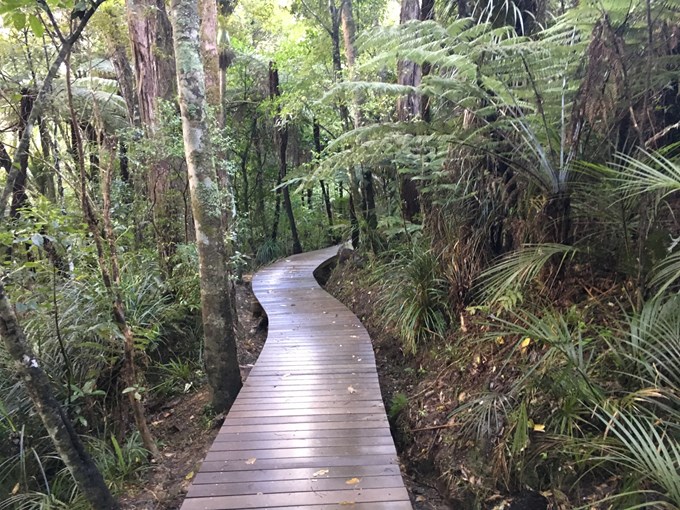It’s been a year of behind-the-scenes work for the Auckland Council’s kauri dieback response teams, with some tracks ready to open and a busy work programme set for summer.
To round off 2019, newly upgraded tracks will open in Auckland’s west and south.
McElwain (to the lookout) and Jubilee Tracks in the Waitākere Ranges both open this weekend.
Work is also underway on a number of other tracks including Omanawanui, Spragg Bush, Donald Maclean Track and White Track, which are expected to be open at various times over summer. In addition, work is programmed to start early in the new year on Karamatura Track, Karamatura Loop, Puriri Ridge, Cutty Grass, Whatatiri Track, Winstone Track and Ahuahu.
In the Hunua Ranges, work is underway on Massey Track. Following that, kauri protection teams will move to Wairoa Southern Loop and then Waharau Loop Track.
The council's local parks team will be opening Clevedon Scenic Reserve in Auckland’s south east in the next few weeks too.
But track openings aren’t all all that’s been going on this year.
Region-wide programme in place

Lisa Tolich, Auckland Council’s Biosecurity Team Manager - Kauri Dieback, says significant progress has been made in 2019 on a number of initiatives that support a wider work programme to keep kauri standing.
“As a council, and personally, for those of us who enjoy being outdoors, I feel that we have a duty of care to protect our forests for future generations,” says Tolich. “This sense of responsibility guides our approach.
“We have a multifaceted response to kauri dieback in action – and coordinating this is no small feat. It’s been a big year for bringing teams together and working behind the scenes to ensure we have good processes in place.”
Key outputs for the council include installing new, state-of-art hygiene stations at parks across the region from Tāwharanui to the Hunua Ranges, training and upskilling contractors on the health and safety aspects of working in kauri areas, and signing off on all major design elements of track upgrades.
Community consultation has also been a big focus. A full survey of local parks was finalised in 2019, resulting in all Local Boards endorsing and signing off on all local track upgrades and closures.
Tolich says that while there’s still a lot of work to be done, she is pleased with how the council’s teams are tracking.
"As well as upgrading tracks across the region we’ve also got surveillance teams monitoring the health of our forests, research and treatment projects underway including the support of phosphite treatment on private land, behavioural change initiatives like our ambassador programme in place and intelligence-led compliance operations set up.”
The council also collaborates on its approach to disease management with other Regional Councils, MPI, DoC, iwi partners like Te Kawerau ā Maki and community groups like Pest Free Kaipātiki.
Key progress for Regional Parks
While teams weren’t out on tracks over winter, we were able to take the time to complete the designs elements for the majority of track upgrades included in the five-year kauri dieback work programme for the Waitakere Ranges.
Regional Parks Manager Rachel Kelleher says this is a big part of the process and clears the way for contractors to get on with upgrades.
“We are working hard to make sure we’re delivering on what we promised Aucklanders and now that summer is here, we’re ramping up our mitigation work out on tracks.”
If factors like weather play ball, Kelleher says the council is set to exceed it’s Regional Park track upgrade targets and could make a start on work scheduled for 2021.
Key progress for Local Parks
This year has been full on for local parks too. The kauri team has inspected over 400 paths and walked over 62km of local tracks, resulting in the identification of 72 parks that require track upgrades or indefinite closure.
Some parks in Kaipātiki, Rodney and Hibiscus Coast and Bays local board areas have extensive stands of kauri scattered throughout their reserves. These are mostly healthy and are being upgraded for protection reasons. Teams have been working closely with stakeholders in these communities.
“Although there are a number of local tracks being closed there is also a considerable length of track that is being upgraded to a dry safe and useable standard for the benefit of locals and the overall health of the forest,” says Tolich.


